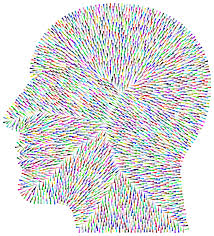Misdiagnosed and Misunderstood: When Autism Is Mistaken for Borderline Personality Disorder
-
by
Dr Constantina Katsari
- No Comments on Misdiagnosed and Misunderstood: When Autism Is Mistaken for Borderline Personality Disorder
In mental health services, especially during crisis, it’s easy for complexity to be mistaken for clarity. One young man’s story, recently documented in a 2022 case study by Iversen and Kildahl, illustrates just how dangerous that mistake can be. The case details how “Adrian,” a young man with autism, depression, and ADD, was misdiagnosed with borderline personality disorder (BPD) for years. This misdiagnosis led to inappropriate treatments, repeated hospitalisations, and worsening distress—until a team with autism expertise took a second look.
A Crisis Misread
Adrian first entered psychiatric care in crisis. He was engaging in frequent non-suicidal self-injury (NSSI), had attempted suicide, and showed signs of depression and anxiety. At 18, he was diagnosed with BPD, largely based on his emotional struggles and NSSI. But something didn’t add up. Adrian rarely had interpersonal conflict, often withdrew rather than lashed out, and described feeling overwhelmed by all emotions—not just abandonment or rejection. He also struggled with social connection, but not in ways that aligned with BPD’s typical relational patterns.
Uncovering Autism
A later, more thorough assessment revealed something critical: Adrian had undiagnosed autism. Using gold-standard autism diagnostic tools and collecting detailed developmental history, clinicians found clear signs of autism that had been missed. His communication was rigid, his emotions hard to name, and his ability to read social situations was impaired. These weren’t signs of emotional manipulation or unstable identity—they were signs of neurodevelopmental difference.
The Role of Self-Injury
One major reason for Adrian’s misdiagnosis was the presence of NSSI. Mental health professionals unfamiliar with how self-injury presents in autism may wrongly assume it indicates BPD. But for autistic individuals, NSSI may serve a different function—not about managing relationships, but about managing internal distress, particularly when emotions are confusing or overwhelming. Adrian, for example, often hurt himself when alone and described it as a way to escape feelings he couldn’t name. He didn’t do it to get attention or test boundaries. He did it because he didn’t know how else to cope.
Surface Similarities, Different Roots
The case also highlights how autism and BPD can appear similar on the surface. Both involve difficulties with emotion regulation, social interaction, and identity. But the roots and rhythms of those difficulties are different. In BPD, distress often comes from chaotic relationships and fear of abandonment. In autism, it stems more from confusion, overload, or social disconnection. Without proper assessment, it’s easy to mistake one for the other.
A Turning Point in Treatment
Importantly, when Adrian was finally correctly diagnosed, the care he received changed dramatically. Antipsychotics were reduced or discontinued. Therapy focused not on challenging relational patterns but on helping Adrian understand his emotions, build structure, and manage sensory overload. Within weeks, he became more communicative and engaged. Self-harm dropped significantly. For the first time, Adrian felt understood—and safe.
Lessons for Carers and Clinicians
For carers and professionals alike, this case offers vital lessons. Autism doesn’t disappear in adolescence or adulthood. It can be masked by depression, anxiety, ADD, or trauma. And without deep understanding and proper tools, it can be misread as something it’s not—leading to years of ineffective treatment and avoidable pain.
Mental health services must become better equipped to recognise autism, especially in individuals who present in crisis or with complex needs. A rushed diagnosis based on superficial similarities does not serve the person at the heart of the story. Only by listening closely, assessing fully, and involving people in their own understanding can we avoid misdiagnoses like Adrian’s.
For BPD UK, this case reinforces a crucial point: accurate diagnosis isn’t just a clinical matter. It’s a human one. And carers need services that look beneath the surface to see the whole person—not just the symptoms that scream the loudest.
Read the Full Case Study
You can read the original article, Case Report: Mechanisms in Misdiagnosis of Autism as Borderline Personality Disorderby Stine Iversen and Arvid Nikolai Kildahl, published in Frontiers in Psychology (2022), here: https://doi.org/10.3389/fpsyg.2022.735205
💬 Caring for someone with BPD?
👉 Book a FREE One2One support session
🧠 Join our FREE webinars and peer groups
📩 To book email us at: info.bpduk@gmail.com
Discover more from BPD UK
Subscribe to get the latest posts sent to your email.




